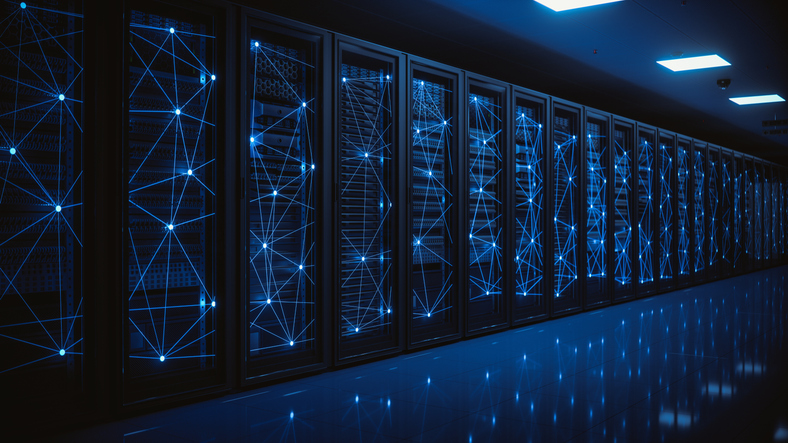Data ve Network Sistemleri

Data ve Network Sistemleri, kurum içi ve dışı dijital iletişimi güvenli, hızlı ve verimli şekilde sağlayan altyapı çözümleridir. Bu sistemler; bilgi paylaşımı, veri depolama ve erişim süreçlerini optimize ederek operasyonel sürekliliği destekler.
İnternet servis sağlayıcıları, kurumsal ağ yapıları ve bulut bilişim hizmetleri aracılığıyla geniş erişim imkânı sunan bu sistemler, kullanıcı ihtiyaçlarına göre ölçeklenebilir çözümler üretir. Aynı zamanda farklı kullanıcılar arasında bilgi ve kaynak paylaşımını kolaylaştıran iletişim altyapılarını temsil eder.
Başlıca bileşenleri şunlardır:
Veritabanı Tasarımı.
Yerel Alan Ağları (LAN)
Geniş Alan Ağları (WAN)
Veri Merkezleri
Ağ Güvenliği Sistemleri
Ağ Optimizasyonu ve Yönetimi
VLAN Yapıları
IP Adresi ve Port Yapılandırmaları
Veri Merkezi Bileşenleri ve Altyapı Gereksinimleri
1. Keşif ve Konumlandırma
Veri koruma ihtiyaçlarına uygun altyapının belirlenmesi, başarılı bir veri merkezi kurulumu için kritik öneme sahiptir. Veri merkezleri sabit yapılarda veya modüler ve taşınabilir sistemlerle tasarlanabilir. Enerji, döşeme, yangın söndürme, soğutma, elektrik, güvenlik ve çevresel izleme gibi sistemlerin entegre çalışması, hizmet sürekliliğini ve operasyonel verimliliği sağlar. Sabit yapılarda doğru konumlandırma ve fiziksel güvenlik önlemleri önceliklidir.
2. Enerji Yönetimi
Veri merkezlerinde kesintisiz ve yedekli enerji kaynakları, veri güvenliği açısından hayati önem taşır. Tüm aktif cihazların enerji tüketimi izlenmeli ve kayıt altına alınmalıdır.
3. Yükseltilmiş Döşeme Sistemleri
Enerji ve veri kablolarının güvenli ve düzenli taşınmasını sağlayan yükseltilmiş döşeme sistemleri, esnek kurulum erişimi sunar. Bu yapı, cihazların soğutulmasını desteklerken, dolap ve ekipman yerleşiminde değişiklik yapılmasına olanak tanır.
4. Yangın Söndürme Sistemleri
Olası yangın durumlarında veri güvenliğini korumak amacıyla karbondioksit gazı ile çalışan otomatik yangın söndürme sistemleri kullanılır. Tüm bileşenler entegre yazılım platformları üzerinden yönetilerek hızlı müdahale sağlanır.
5. Soğutma Sistemleri
Aktif cihazların ürettiği ısıya uygun kapasitede soğutma sistemleri seçilmeli, yedeklilik ve uzun ömürlülük dikkate alınmalıdır. Enerji verimliliği yüksek cihazlar veya su soğutma teknolojileri tercih edilerek sürdürülebilirlik desteklenir.
6. Güvenlik Sistemleri
Veri merkezine erişim, biyometrik doğrulama (yüz tanıma, parmak izi, retina tarama) gibi yöntemlerle kontrol altına alınmalıdır. Cihazlar kritik seviyelerine göre sınıflandırılmalı, personel yetkilendirmeleri net şekilde tanımlanmalıdır. Acil durumlar için tahliye sistemleri (yangına dayanıklı kapılar, acil çıkış butonları) hazır bulundurulmalıdır.
7. Çevresel İzleme
Enerji, soğutma, yangın söndürme ve güvenlik sistemleri entegre yazılımlar aracılığıyla 7/24 izlenmelidir. Kamera sistemleri ile sürekli kayıt alınmalı; sıcaklık artışı, elektrik dalgalanması, su sızıntısı gibi riskler için erken uyarı mekanizmaları devrede olmalıdır.
